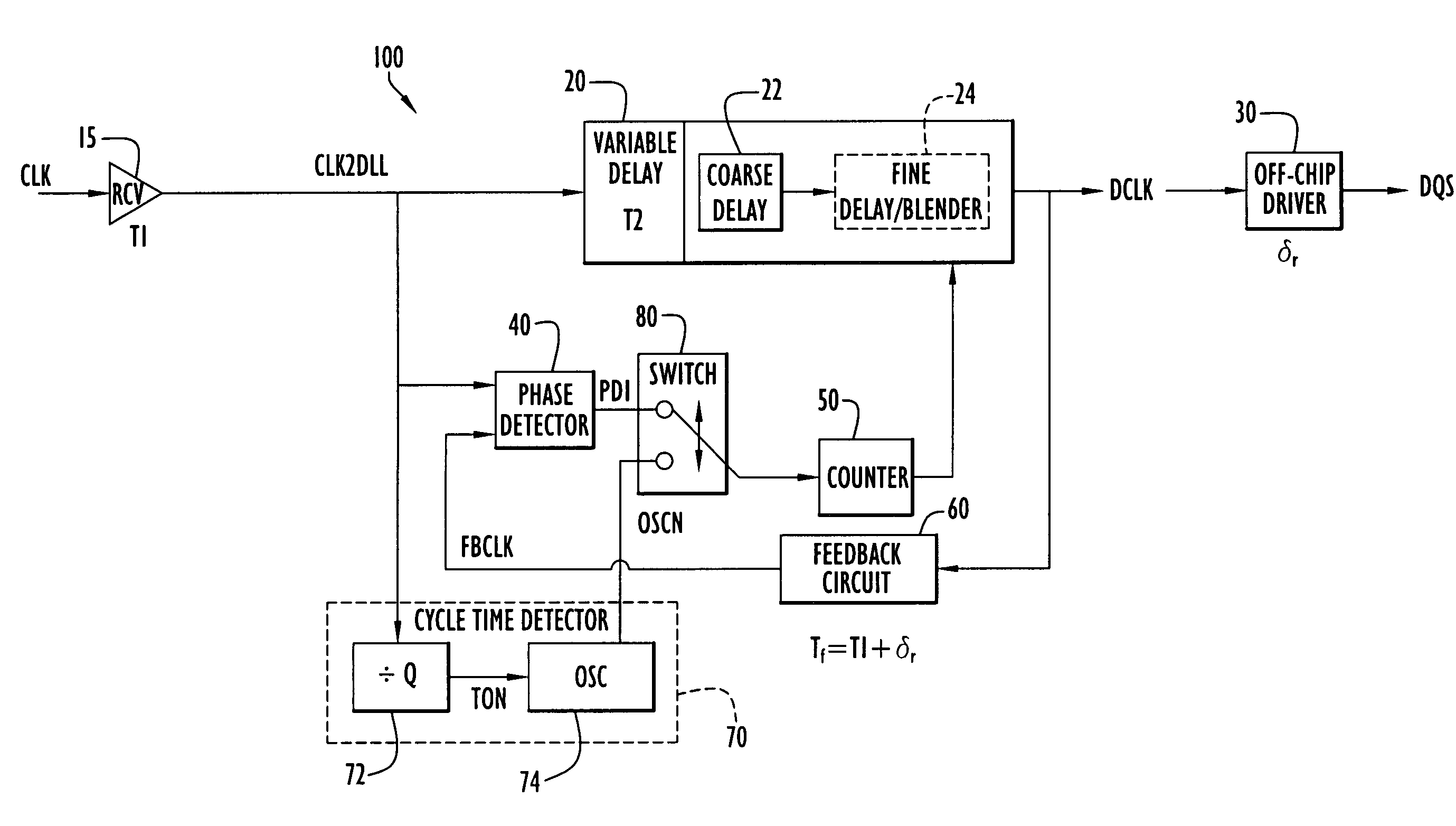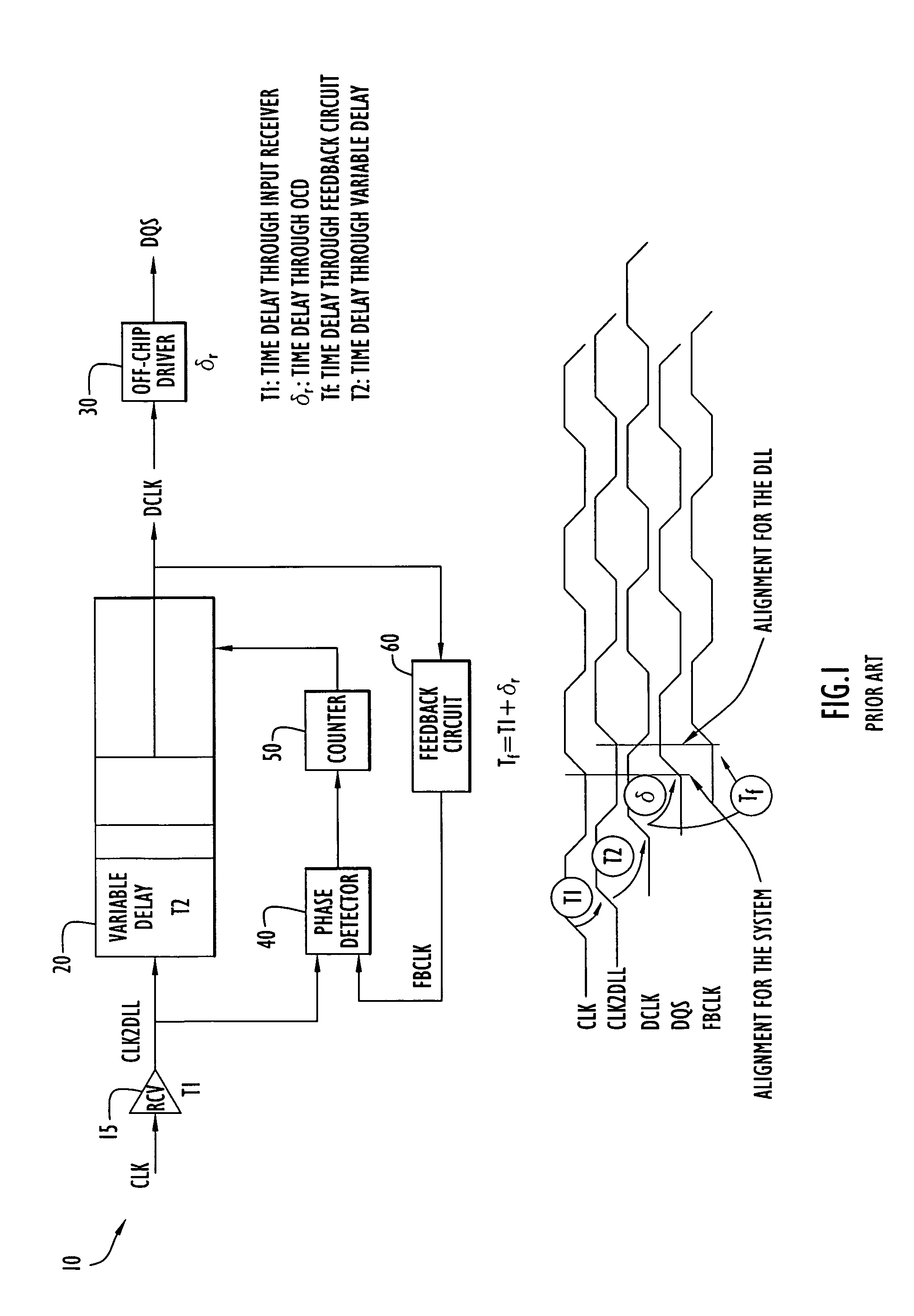Method and apparatus compensating for frequency drift in a delay locked loop
a delay and loop technology, applied in the field of synchronization of signals, can solve problems such as the inability of the dll to accommodate the delay, the delay occurring, and the decrease in the clock frequency (or the increase of the clock period)
- Summary
- Abstract
- Description
- Claims
- Application Information
AI Technical Summary
Benefits of technology
Problems solved by technology
Method used
Image
Examples
Embodiment Construction
[0022]A delay locked loop circuit (DLL) reduces or compensates for a skew between a clock signal and data or between an external clock and an internal clock as described above. However, these types of circuits may encounter overflow or underflow conditions during periods of clock frequency drift that require delays beyond the capability of the DLL, thereby preventing synchronization of the signals as described above. Accordingly, the present invention DLL accommodates overflow and overflow conditions without the adverse effects of adding additional delay or delay elements or resetting the DLL for operation. A DLL according to the present invention is illustrated in FIGS. 3–4. The DLL typically operates over a clock frequency range to lock onto a particular clock or operational frequency as described below. By way of example only, the DLL may operate in the frequency range of 80 MHz–600 MHz (or clock cycles (Tcycle) in the range of approximately 1.6 to 12.5 nanoseconds); however, the...
PUM
 Login to View More
Login to View More Abstract
Description
Claims
Application Information
 Login to View More
Login to View More - R&D
- Intellectual Property
- Life Sciences
- Materials
- Tech Scout
- Unparalleled Data Quality
- Higher Quality Content
- 60% Fewer Hallucinations
Browse by: Latest US Patents, China's latest patents, Technical Efficacy Thesaurus, Application Domain, Technology Topic, Popular Technical Reports.
© 2025 PatSnap. All rights reserved.Legal|Privacy policy|Modern Slavery Act Transparency Statement|Sitemap|About US| Contact US: help@patsnap.com



